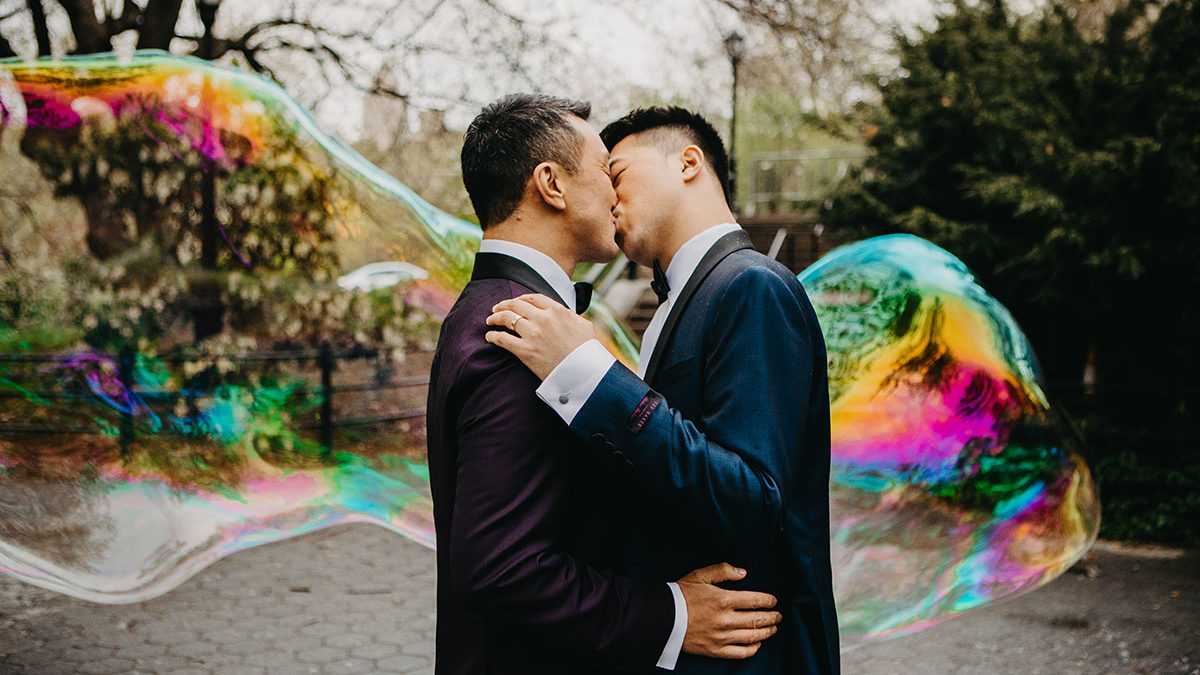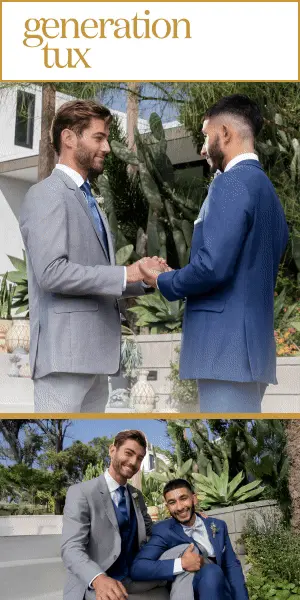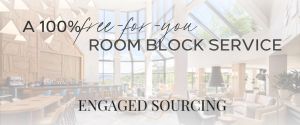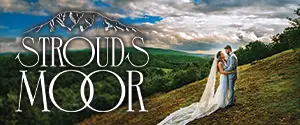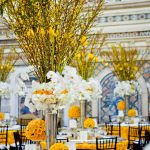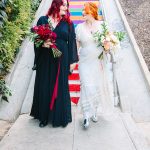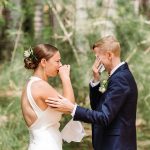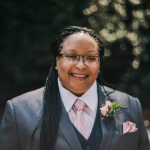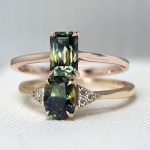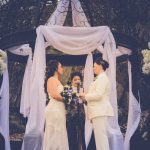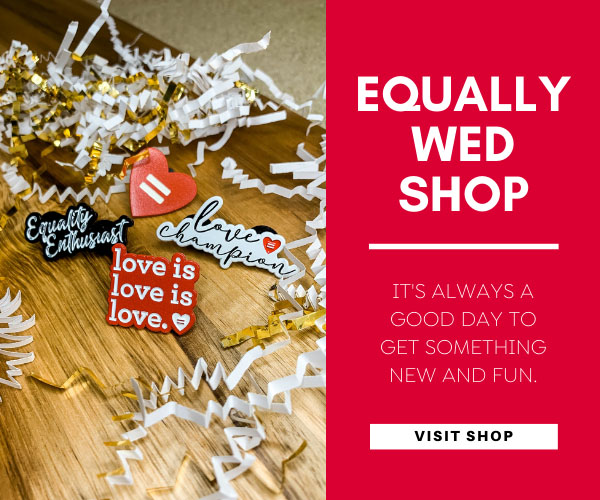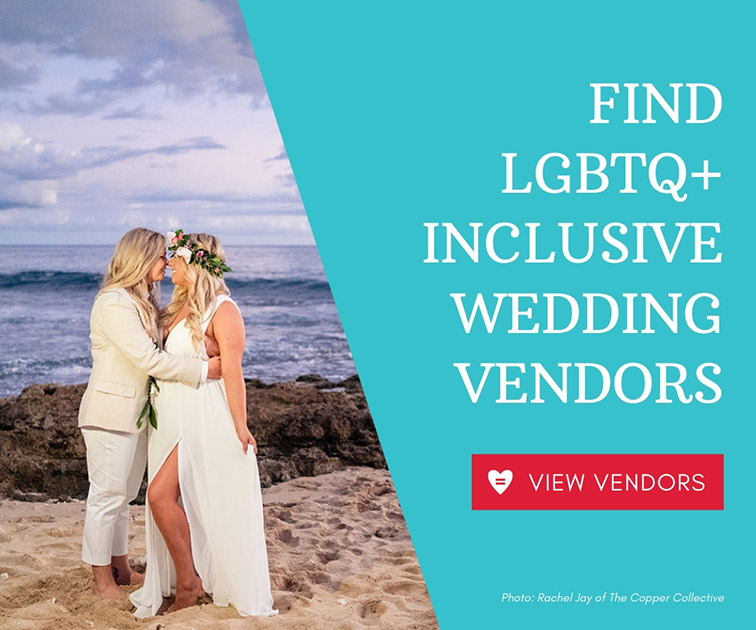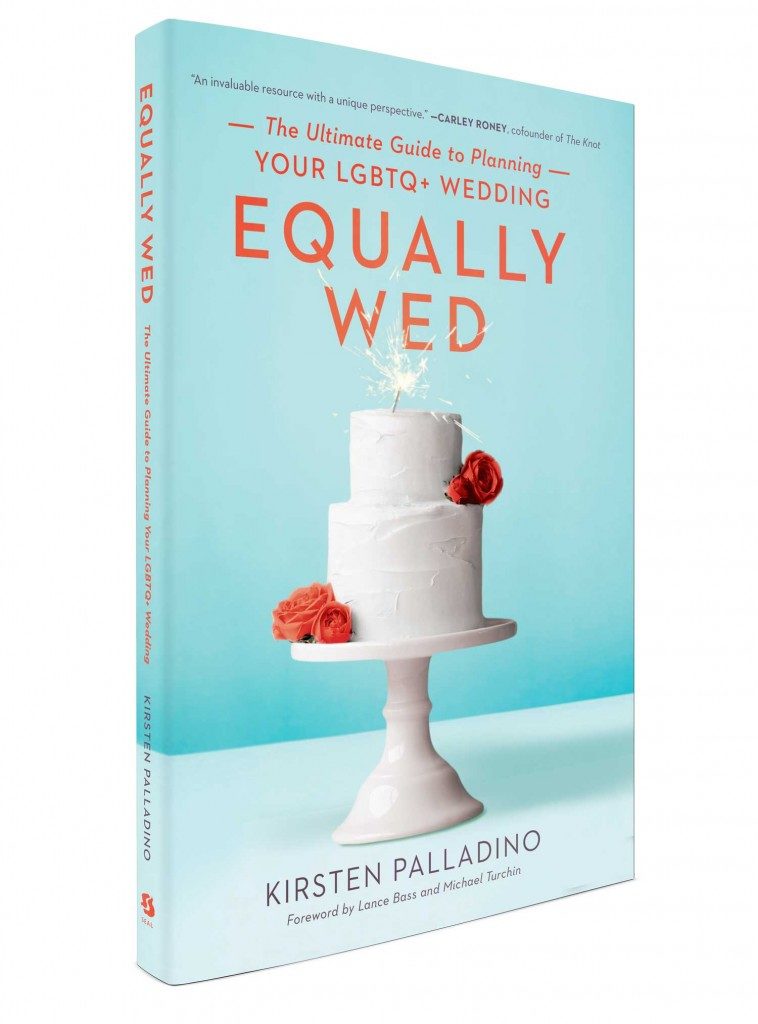The year was 2013. I found myself planning a wedding and reception for a marriage that would not be recognized by my state. Both my partner and I have experienced some shifting of identities since our wedding, but we remain two queer people who love each other.
According to the government at the time, our union fell outside of the “one man, one woman” rule. Designing an entire wedding is really hard, so I turned to the internet for help. I ended up checking out a (now defunct) message board for weird “brides” planning their nuptials and it seemed like a better fit than The Knot. But even in that supposedly feminist space, old fashioned and highly gendered wedding rules were in constant discussion and even felt like the norm.
This is a little hard to imagine now. Since same-sex marriage was legalized nationwide in 2015, we’ve seen a shift in wedding culture. The normalization of gay folks getting hitched has helped to move along the conversation about what weddings are, and what they need to be. And everyone, whether they are LGBTQ+ or not, benefits from a loosening of rules and expectations, which is allowing people getting married to make more decisions based on what works for them.
Queer weddings make weddings better for everyone. And while same-sex marriage legalization isn’t the most important victory the LGBTQ+ movement has or will reach (do we really have to have just one?), it does matter. Everyone getting married now should probably thank queer people for paving the way to more inclusive wedding culture.
Before gay marriages were commonplace (and let’s go ahead and call it the Dark Ages), I still saw people hung up on old-timey money rules such as “the bride’s family is responsible for paying for the wedding.” But, of course, when there are two grooms, such a rule becomes not only silly and out of date, but literally impossible to follow. I was also told that the groom’s family was supposed to throw the bridal shower, but when two women get married that doesn’t exactly work very well. Anyhow, the idea of a “girls-only” bridal shower, where a woman receives gifts to set up her new household (and presumably take care of her new husband) looks like a blast from the past, and not the cute vintage dress kind, either. And when we were planning our wedding, people were very surprised and a little confused to learn that we planned for a mixed-gender wedding party, rather than bridesmaids and groomsmen. All of these rules and expectations were based on the assumption that weddings always include one man and one woman, and any other configuration brought up a lot of questions about how things would be handled.
And while gay people always did plan weddings, both in the few states where it was legally recognized and in those where it was not, legalization has normalized gay marriage. It used to feel like weddings and wedding culture as a whole were for straight people. LGBTQ+ people who chose to marry were seen as oddities, like in the lesbian wedding episode of the TV show Friends. The episode is littered with homophobic jokes, Chandler assumes that every woman at the wedding is gay (but expects them to date him anyways, apparently!) and it even includes the line, “Now I’ve seen everything!” because apparently there’s nothing more shocking than two women getting hitched.
Conservative pundits were afraid that letting gay people get married would do something to “the institution of marriage,” weakening it, maybe even ruining it. At the time many of us laughed at this idea. But queer people have impacted the definition of marriage, at least by wearing down the idea that a marriage, or a wedding, is defined by two completely separate roles that have very little in common. Challenging that notion and introducing the concept of a wedding is about two people regardless of their sex and gender has done something. It has created a space for everyone—even cishet people—who aren’t comfortable with that gender division to skip it.
With queer weddings more visible and prominent than ever, there is no shortage of examples of different ways to do weddings that don’t require old and outmoded systems. In fact, as of this writing, the homepage of the Martha Stewart Weddings website currently features two brides in white dresses, being married by a female officiant, with their mixed-gender wedding party, all in black tuxedos, on the stairs behind them. And I would argue that this visibility, more than legalization itself, is what has impacted wedding culture as a whole. Back in 2013, we still had to settle for scraps. But today we’re part of the conversation.
Wedding traditions are constantly shifting and changing, despite the diamond industry’s efforts to market them as timeless. Before Queen Victoria wore one, white wedding dresses were almost unheard of. From the macarena to photo booths, each generation of marrying people has helped to update and change our idea of what a wedding is (and isn’t). For many of us, our shifting conception of the wedding has been shaped by many things: Instagram, rustic barn receptions and, of course, gay marriage.
People getting married today encounter more options than ever, allowing them to tailor not just their reception, but the wedding ceremony itself, to their own needs. It’s no longer seen as a given that every bride will need her father to “give her away,” and it has thankfully been ages since I heard a “which one is the groom” joke about a lesbian wedding.
Weddings were never going to stay the same, the customs and norms around them are constantly changing and evolving. Queer people are part of that evolution, and not only by gaining the right to legally marry. We’ve now become contributors to the shifting norms of wedding culture, and we should be proud to have a hand in making weddings a little more fair, a little more fun and a lot less gendered.
David Minerva Clover is a queer and transgender writer, covering everything from parenting to why dinosaurs are awesome. His work has appeared in The Washington Post, New York Mag, The Establishment, and many other places. He lives in beautiful Detroit Michigan with his spouse, one child, and an embarrassment of animals. Check out his blog at Postnuclear Era or follow him on twitter at @dm_clover.
MOST VIEWED STORIES
- A Guide to Writing Nontraditional, Inclusive Wedding Vows
- A Stylish, Heartfelt Celebration in Munich: Bastian & Marc’s Modern Fall Wedding
- How to choose your wedding suit or tuxedo
- The Rise of Weddings With Long-Lasting Investments: Benefits Beyond The Big Day
- How to have a green wedding that Mother Earth would attend



